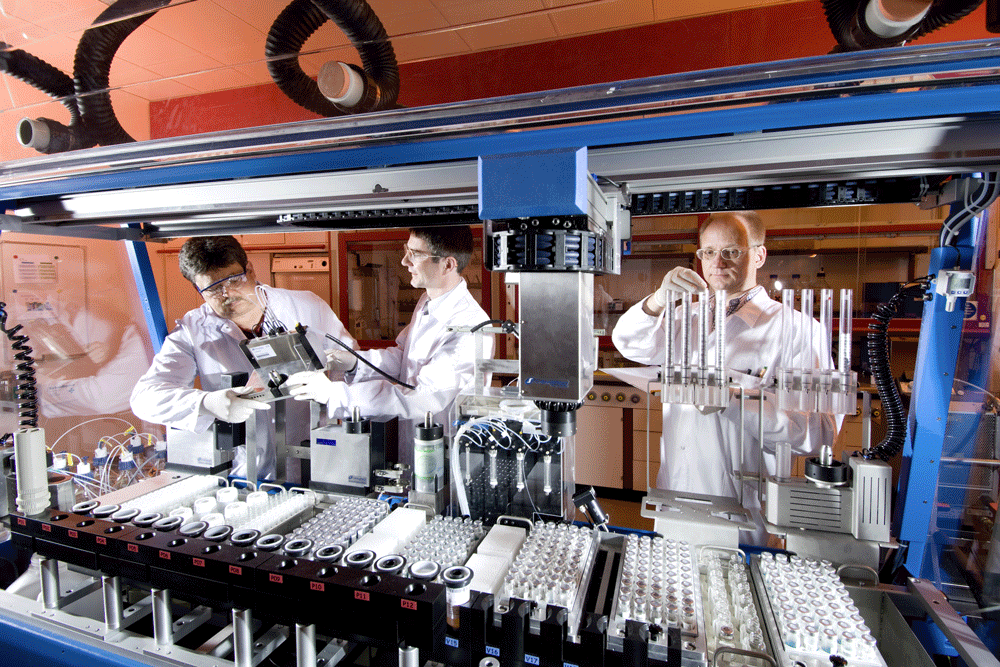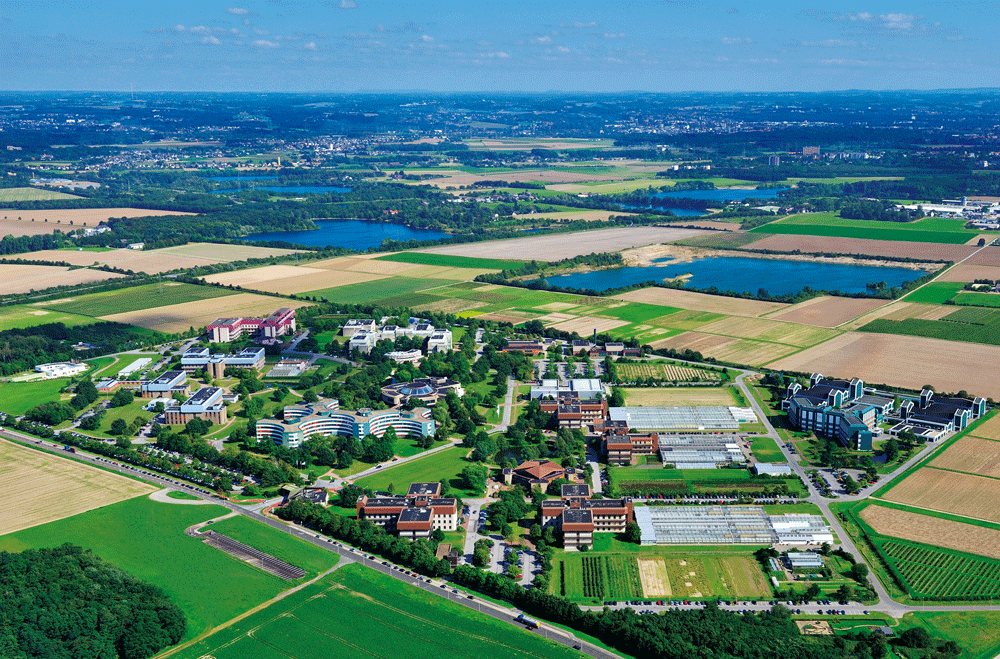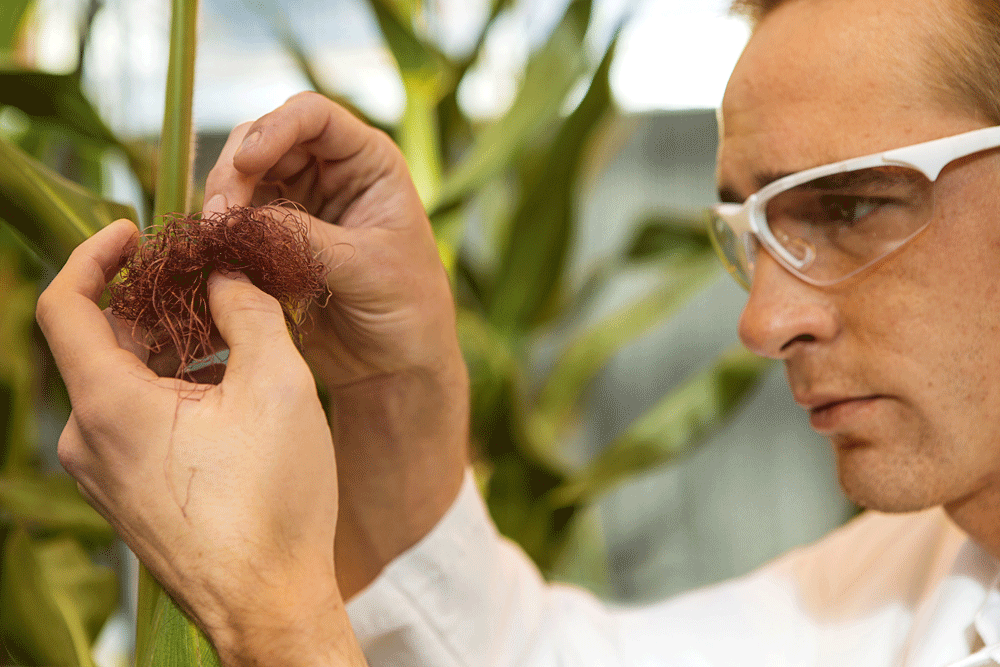Agrochemicals: Bayer, Monsanto and all the others
By Doris Ahlers, Thomas Preusse
Bayer-Monsanto, Dow-DuPont, Syngenta-ChemChina: 2017 and 2018 are years of mergers and takeovers within the crop protection and seed industries. This is a movement not only painfully shaking-up the companies concerned, but also affecting the whole branch, including farmers too.
Remember names such as AgrEvo or Novartis? These were the results of the last takeover wave some 15 years ago. And even before that, enterprises such as Hoechst, Rhone-Poulenc, Ciba-Geigy and ICI operated in crop protection. The once broadly spread and, to a great extent, nationally-anchored structures in the crop protection industry have seen continual attrition down to just a handful of players nowadays.
The sums involved in the transactions are hard to get your head around
In June 2018, Bayer finished the 63 billion US $-takeover of Monsanto. This brand is now history. Just as huge is the transaction sum involved in the Dow/DuPont deal: A new “pure agriculture” company Corteva agrisciences is expected to start in July 2019. Syngenta costs ChemChina 43 bn $. With that sort of money, you could currently buy a few million hectares of European farmland. What’s behind such apparently insane sums? Why are companies negotiating so hectically just now? And what’s the thinking behind such developments, bearing, as they do, all the signs of a collective »hype«?
There’s no one-dimensional answer to such questions: Every one of these fusions has had a separate reason and a different motivation.
Four main reasons for agrochemical takeovers
- Seed first – crop protection late: Profit potential is seen in the patented combination of crop protection and seed supply. This is because with crop protection alone, the »researching« enterprises, especially in the price-sensitive growth markets of the emerging countries, trail behind the suppliers of patent-free products. Under »researching« we used to find the »big six« agrochemical giants from Monsanto to Dow. Anyway, as far as customer recognition is concerned, it is important to have seeds in the company portfolio because seed tends to be what farmers think about first – crop protection later.
- Strategic lengthening of patent period: Before marketing authorisation for a new active ingredient is achieved, the process can »devour« up to 250 million €. After just a few years, the patent then runs out. A strategic combination of plant protection with crop seed offers the chance of lengthening this »protected« period through applying the crop varietal rights.
- Securing business shares: Starting in 2007, the worldwide crop protection market soared on an almost permanent high trajectory. But since 2013/14, above all Monsanto and Syngenta, but also Dow and DuPont, have lost a lot of business in this market, starting off with lower prices in South America. Crop protection sales there had been important for these companies, supplying a good proportion of their growth income in previous years. Growth has also substantially weakened in this field in Asian emerging countries – above all in China. In Europe and North America, turnover from crop protection product sales has been marking time for years now. (Large-scale) shareholders are unsettled. Corporate bosses have had to go.
- Availability of cheap capital: At the same time, however, capital has become increasingly cheaper. Never before could companies be so well financed on the bond markets. And: in 2015 there flowed with 4.6 bn US$ worldwide, ten times more risk capital into companies within the agricultural sector compared to 2012.
Different business strategies
Hereby, the starting positions of the companies concerned differ widely because they have put different emphasis on the seed side of their respective businesses.
Monsanto earned the largest proportion of its gigantic turnover with seed and basic technology for traits (i.e. genetic characteristics introduced into varieties), or the licences for such procedures. Roundup, cheap as it is, contributes an astounding share of turnover.
Syngenta almost offered a reverse image of this situation: lots of agrochemical, although still more than a little crop seed.
Bayer: here too, chemicals were most important for turnover. On the investment side, however, seed had become very important in recent years.
Dow: the situation is similar to Bayer.
DuPont/Pioneer: seed outweighed everything else.
All the well-known, and less-known, generic producers make by far the most income with chemicals, although their business models with patent-free products are something else again. Innovation here is limited to new combinations or improved formulations.
Paradoxical situation started the takeover round
If the current »fusionitis« environment really has to be traced back to a single reason, then this would have been the structural weakness within Monsanto. At first this sounds paradoxical because for years Monsanto has been the most economically successful enterprise in the agricultural sector, even with the loss it made in 2015. After all, the patented combining of crop protection and seed turned out, since its introduction in 1996, to be in effect a licence to print money, and remains so. Through astonishingly massive emergence of »superweeds« in the main Roundup-Ready application areas, this strategy is now threatened. By now, Monsanto had hoped to have solved the glyphosate resistance problem by applying more gene technology to find a way to »knock out« the resistance. So far, the ideas have not worked well enough and being sold currently as a success is the offering of an old active ingredient, Dicamba, for application in resistance management. Industry observers think that what makes Monsanto really expensive (and causes investors to partly question whether Bayer has perhaps overreached itself) are the perspectives in the digital field. Here, Monsanto has invested huge amounts and is making sure everyone knows about it. Still, the awaited returns in the form of large profits have not materialised.
A short look into history
In the corporate world, you go shopping and buy whatever capability you want!! In spring 2015 Monsanto started an attempt to take over Syngenta. This firm presumably appeared to the folks from St. Louis as a candidate ripe for the plucking, perhaps because of weak financial performances. Syngenta had for some years been engrossed (too) long with the worldwide fusion of its crop protection and seed divisions, without really succeeding in integrating them. Monsanto-Syngenta could have done well together, especially with seed, with market dominating positions being produced in a number of areas. End of September 2015, the (few) talks had been broken off. Syngenta let it be clearly understood that Monsanto was no option and Monsanto did not want to risk an unfriendly takeover.
The avalanche of merging and take overs had been triggered
In December 2015 Dow and DuPont announced they were merging and that their three (merged) divisions were to be operated as independent companies. Apparently, investors thought the companies were not profitable enough on their own. Especially in crop protection, the high product development costs made this merging of the »smallest of the largest» plenty of sense. DuPont sells the insecticide business and grain herbicide research to FMC.
Perfect match: Bayer and Monsanto
After year-long speculation as to whom Monsanto would now buy, September 2016 saw a surprising development: Bayer going to Monsanto. Whether the Leverkusen company had simply beat the St. Louis one to the gun, remains a matter of speculation. At any rate, the product portfolios of the two companies fitted perfectly together. The fusion of the corporate cultures could perhaps prove a little more difficult. At a single stroke Bayer was presented with a seed division: one of a size it would never have been able to get through purchasing smaller seed specialist companies. And Monsanto got development perspective.
Less spectacular: the planned takeover of Syngenta by ChemChina
The Chinese state-run company already owned Adama in the crop protection sector. Here, the motivation is once again different: China bought competence. This was necessary because, in the long term, it could no longer afford to be seen as the cheapskate of the world. Especially in the agricultural sector, the aim of ChemChina is for higher productivity. China has around 2000 crop protection companies. The government recognised that it had to urgently consolidate the inefficient structures. For Syngenta, on the other hand, the move opened unique access to a market with huge growth opportunities and a technology transfer, especially in the seed area, just at a time when protectionism was once again taking over from globalisation.
All the big players are merging – except BASF
The rest will have to cast off products on monopoly regulation grounds and BASF aims to profit from this. The Ludwigshafen firm takes Liberty link technology and the canola, soybean, cotton, vegetables and grain seed business as well as digital activities from Bayer.
BASF is very strong in the realm gene technology. So far, however, it worked closely together with Monsanto here. Also, the purely breeding companies, above all KWS and Limagrain as the two big independent and worldwide-acting breeders, want and need access to new technology. Here, new alliances maybe formed somewhen. Incidentally, if the KWS owners had allowed it, this company would have long been with BASF.
How does all this affect farmers?
Products could become more expensive where there’s less competition on the market. But the decisive question is what innovations will be possible. And whether new »dependent relationships« might take place.
Bayer and Monsanto are nearest to forming a clear strategy in this sense. They put their money on seed plus chemical crop protection products, supplemented by biological and digital aids. Think of the spectacular takeover featuring the meteorological startup Climate Corporation by Monsanto in 2013. Today’s focus on individual products will change towards the model of a digital platform where the farmer pays for access to a crop production system.
Added value may win approval by farmers
Earning cash for the respective companies will be less the products themselves and more their combination on a platform. Whether the products are produced by the company itself, or licensed from an outside company, will not be important. In a formal sense, the suppliers will remain independent companies. A platform does not necessarily need to be run by one of the »big players«. Instead, regional smaller platforms are thinkable, if »global« solutions do not fit. Maybe this won’t suit European farmers for whom independence is above all important? Just wait and see. Those realising such a production system, up until now still a vision, and offering added value to farmers will win their approval, if not their hearts. We’ve seen the same process over 20 years with gene technology, despite the business policies of Monsanto.






